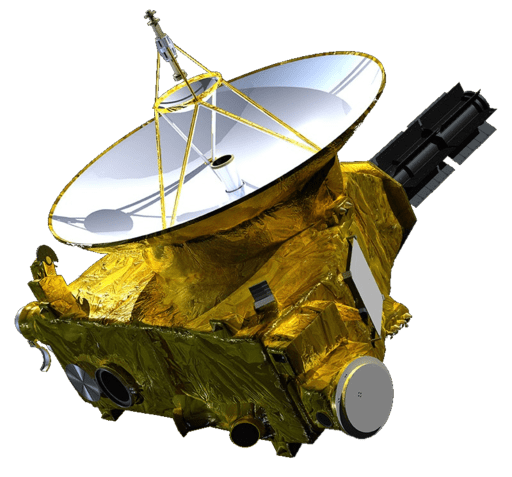January 19, 2020 marks the 14th anniversary of the launch of the New Horizons, the first interplanetary flyby mission to everyone’s favourite dwarf planet Pluto. This piano-size space traveler is helping us to understand the icy World on the edge of the Solar System.
Mission overview
The Pluto explorer blasted into Space aboard Atlas V5 rocket from the Cape Canaveral Air Force Station in Florida. The spacecraft began its journey on January 19th, 2006, after years of mission planning, cancellations and launch delays. Although New Horizons proudly bears the title of “the fastest spacecraft ever launched”, it still took over 9 years to reach its first destination! On July 14, 2015 astronomers and space enthusiasts around the world cheered as New Horizons flew less than 8 000 km above the dwarf planet’s surface.
After examining Pluto and its moons, the spacecraft was redirected to its next target, the ancient planetary seed 486958 Arrokoth in the Kuiper Belt. The flyby of Arrokoth happened on January 1, 2019.
New Horizons is currently heading towards the outer edge of the icy Kuiper Belt, exploring other Kuiper Belt objects on its way.
Here are 10 facts you probably didn’t know about New Horizons
- The New Horizons spacecraft set off to explore the planet Pluto. But half a year into the robotic explorer’s journey, it’s target was reclassified as a dwarf planet. Oops!
- On its journey through the Asteroid Belt New Horizons had an unplanned flyby of one of the asteroids. The space rock got a name (132524) APL, after Applied Physics Lab (The Johns Hopkins University) where New Horizons was designed and built.
- Astronomers discovered Arrokoth already after the launch of the spacecraft and just a year before New Horizons reached Pluto.
- Like many other NASA spacecrafts, New Horizons carries a CD with 434 738 names of the members of the public who took part in the “send your name to Pluto” campaign.
- One of the seven instruments on board the New Horizons, Venetia Burney Student Dust Counter, was named after the 11 year old English girl who first suggested the name PLUTO.
- A common way to change a spacecraft speed or direction is a slingshot, or flyby of one of the planets. On the way to Pluto New Horizons zoomed past the giant planet Jupiter. That allowed the spacecraft to gain speed and cut three years off the journey. Not bad!
- Before New Horizons we didn’t know for sure how big Pluto was. The mission revealed that the dwarf planet was bigger than the scientists previously thought!
- It took New Horizons a year and a half to send home all the information it collected about Pluto! The spacecraft is beaming the Arrokoth flyby data towards the Earth as we speak.
- On board the spacecraft is a capsule with the ashes of Pluto’s discoverer, an American astronomer Clyde Tombaugh. Tombaugh passed away in 1997, when the mission was already in the early planning stage. The inscription on the capsule reads “Interned herein are remains of American Clyde W. Tombaugh, discoverer of Pluto and the solar system’s ‘third zone’, Adelle and Muron’s boy, Patricia’s husband, Annette and Alden’s father, astronomer, teacher, punster, and friend: Clyde W. Tombaugh (1906-1997).
- Another memento that is also travelling with New Horizons is a ”PLUTO not yet explored” US postal stamp. In 2015 the stamp made it into the Guinness Record book for the farthest distance a stamp ever traveled, 3.26 billion miles and counting! An Earth-bound stamp would have to circle around the Globe 131 000 times to beat this record!
To keep up to date with Astronomy and Space Exploration news read our Space Blog and visit interactive space shows in our portable dome!

